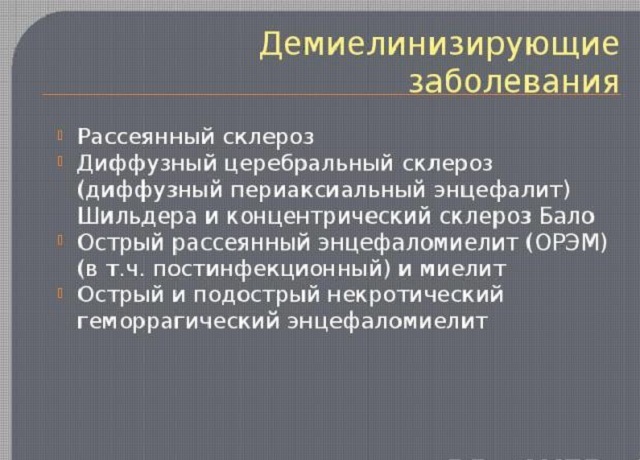 What would have happened to our planet, if she had not been keeping her thick clouds with an atmosphere gently, tenderly gently poking at her sides?
What would have happened to our planet, if she had not been keeping her thick clouds with an atmosphere gently, tenderly gently poking at her sides?
The oceans would boil and evaporate, swept away into the gloomy silence of the cosmos, and the charred stone ball would split the explosions from within.
Something similar threatens the human brain. Threatens constantly from the element with a frightening name "meningitis".
Contents
- Planet Brain
- What do you seed in the liquor. ..
- When the "six" beats the "Ace"
- Meningococcal infection
- Malignant amoeba
- Serous meningitis
- Who takes the risk more than others?
- The need for prevention
- The effect of the
- vaccine Our recommendations
Brain planet
But, like the Earth, the "planet" The brain also has its own invasion-resistant infection, a powerful defense system that preserves its reliable multi-layered "atmosphere".
The cross-section shows that the "shell" is thinner - a solid medulla that forms a low bone "sky" and bounds the main internal cavity of the skull directly to the solid "nutshell" of the skull( consisting of the material of the plastic soap strength).The next layer behind it is another, arachnoid medulla.
And directly on the surface of the brain, "soft"( cerebral vascular in its essence) "diaper" - pia mater( tender mother) is "spread out".
There is a "planet" Brain and another "like a shell" - liquor. This is a thin layer of liquid - its own shallow "ocean", in which the brain, the ocean, is bathed, jealously and carefully washing not only its surface, but also a whole labyrinth of cavities that are communicating among themselves.

But the brain does not just float in this ocean with soft cushions and hard shores embedded in its intended cavity.
No, it is "suspended" with gyroscopic precision and centered in the skull so that a concussion of the head does not lead to bruises of the brain on the inner surface of this solid "cerebral cortex".
Such is the "planet" Brain, the signals to which the whole complex life of the body strictly obeys, and about which the whole damping system saving it from damages cares.
What do you seed in the cerebrospinal fluid. ..
Normally, the cerebrospinal fluid possesses antiseptic activity and is a means of immunobiological protection, but when its properties change, it becomes a "nutrient broth", in which any infection is easy to produce-infection that causes meningitis.
The causative agent of the disease can be: 
- lower chlorophyll-free plants - bacteria ;
- the simplest animals - amoeba , living in warm water and penetrating into the nose during bathing, as well as a causative agent of malaria and toxoplasmosis;
- "living crystals" - viruses ;
- other live malicious agents .
In addition to the common meningitis for any etiology of meningeal syndrome, which appeared not later than 2-10 days after a kind of "flu" or "ARVI", there are signs specific to the affected meninges with a specific causative agent:
- intense headache with pressure on the ears andeyes;
- impossibility to withstand bright light and loud sounds;
- critically high temperature, chills;
- of "cerebral" vomiting;
- seizures;
- meningeal signs;
- "breakdown" and pain in muscles and joints;
- "retardation" and drowsiness.
When the "six" beats "ace"
The level of enzyme-catalytic effect on living tissues in different pathogens is not the same, so some cause only irritation of the meninges, others cause their inflammation( up to purulent, leading the body to death).
Meningococcal infection
The highest mortality rate is set by Neisseria meningitidis, the causative agent of primary purulent meningococcal meningitis( from 5 to 10% of cases die within the first 24-48 hours after the onset of the disease, even with proper treatment), manifested by:
- stiff neck;
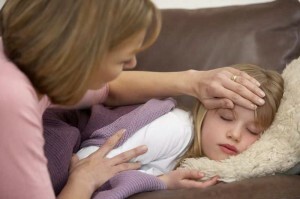
- hyperthermia;
- hypersensitivity to light;
- confusion;
- intolerable headache;
- with vomiting.
In case of generalization of infection( before meningococcal septicemia):
- , characteristic hemorrhagic eruptions and stagnant phenomena appear on the fundus;
- disrupts the functions of the cranial nerves and all internal organs( with the development of pericarditis, pyelitis, cystitis, ulcerative processes in the gastrointestinal tract);
- death comes from an acute circulatory collapse, an autopsy demonstrates the brain, wearing a "purulent cloak" of affected soft meninges( leptomeningitis).
Amoebic amoeba
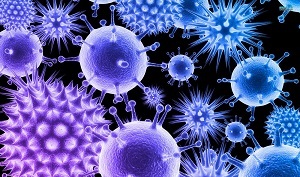 Amoebic meningitis is a disease in southern countries where during bathing you can take a bow with warm, open standing water with the amoeba Naegleria fowleri living in it, which penetrates the brain cavity through the canals of the olfactory nerves and provokes the development of meningoencephalitis. With a very low probability of infection( 1:10 million), the possibility of a fatal outcome is more than 90%.
Amoebic meningitis is a disease in southern countries where during bathing you can take a bow with warm, open standing water with the amoeba Naegleria fowleri living in it, which penetrates the brain cavity through the canals of the olfactory nerves and provokes the development of meningoencephalitis. With a very low probability of infection( 1:10 million), the possibility of a fatal outcome is more than 90%.
The gloomy irony of fate is that the sick person dies before he realizes that he is ill, because the term from 1 to 14 days of mild ailment( pain, dryness, tickling in the throat) will not be counted for.
Then the sense of smell disappears, sharp headaches join, the temperature rises, hypertension of the occipital muscles and symptoms of encephalitis - brain substance damage appear. Vomiting and convulsions in combination with a change in consciousness, and then - a confluence in a coma complete the life path of the ill.
Serous meningitis
A vivid example of serous meningitis is acute lymphatic, to which also belong:
- influenza;
- herpetic;
- is parotid;
- is viral;
- meningitis with toxoplasmosis and malaria.
Its feature is a relatively benign course with reverse development without residual symptoms, manifestation of epidemic outbreaks or sporadic cases.
Infection occurs from exposure to excretory mice carriers and leads to an acute onset:
- with gastrointestinal ailments ( mild nausea, diarrhea, vomiting, abdominal pain);
- with the appearance of meningeal signs , as well as the possibility of the appearance of symptoms of lesions of III and VI pairs of cranial( oculomotor and distracting) nerves( with the synchronous-coordinated "orbital flight" disorder of the eyes, which lost contact with the "planet").
The disease develops against normal or elevated temperature.
A distinctive diagnostic criterion is the lymphocytic pleocytosis of the clear liquor resulting from lumbar puncture under increased pressure. Viruses of serous meningitis can be isolated not only from cerebrospinal fluid, but also from swabs from the nasopharynx, and in case of mumps, from saliva.
Who takes the risk more than others?
Given the widespread prevalence of animals and plant agents that can cause meningitis, as well as the high level of Neisseria meningitidis carriage, one can draw a disappointing conclusion: no one is guaranteed from infection.
But there is a contingent of the population that constitutes a special "risk group" for the danger of its development. It consists of 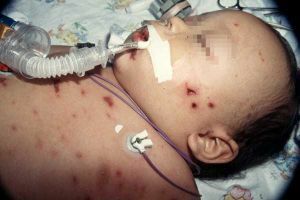 representatives of the following ages:
representatives of the following ages:
- for children under 5 years;
- of young people 16-25 years of age;
- persons older than 55 years.
Special attention should be paid to the groups of people living in dense clusters: students in dormitories and soldiers in barracks.
The risk of infection is also high at splitting of the spleen, chronic exhausting diseases and with the weakness of the immune system.
On the need to prevent
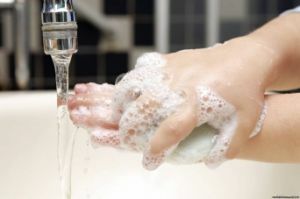 There is no universal way to protect yourself from getting meningitis. But to reduce its risk, both public and personal hygiene measures and a way of life that contributes to increasing the body's natural defense are capable of.
There is no universal way to protect yourself from getting meningitis. But to reduce its risk, both public and personal hygiene measures and a way of life that contributes to increasing the body's natural defense are capable of.
The first include the implementation of quarantine measures( "masked" regime and similar measures) in places and institutions of public use during the period of ORVI rampant, as well as avoiding contact with an apparently ill person or a person suspected of respiratory disease, and with the slightest suspicion of meningitis - immediate hospitalizationhim in the hospital.
Given that the insufficiently high level of immunity results in meningitis, in order to prevent this ailment it is necessary to temper and educate the body from the early years so that the skills of saving one's own life and health from childhood are kept as long as possible.
Teaching competent management of one's own body, satisfaction of its simple hygienic needs should become the norm of "protection of life work" from childhood both in the family and at all subsequent stages of mastering the rules of movement and living in the "stone jungle".
Only true pleasure, obtained from hardening, physical education, useful, moderate and reasonable nutrition( without excesses and becoming habitual intoxications), combined with the ability to fully rest after an enthusiastic work
becomes the basis of real, strong and persistent immunity.
And nothing so stimulates life forces, love and respect for life in itself and in all its other manifestations, as informal communication with native nature in the form of:

- walking tours;
- swimming and swimming;
- cycling and paddling along the water routes,
- as well as gathering mushrooms, berries, herbs for teas;
- help in work on the apiary with the taste of honey and the use of bee products inside and "skin" - absorbing through the skin of the minute molecules that are in the air - particles of wax, pollen and propolis.
No less important is the habit of regular medical examinations( implying control of one's own health):
- with carrying out the doctor's recommended research of ;
- with observance of terms of vaccination ( a measure of protection against infection by the causative agents of the most malignant and infectious infectious diseases).
In case of revealing this or that pathology of an organism it is necessary to entrust the unhealthy to the skilled and competent hands of medical workers. And then the risk of infection with meningitis will decrease substantially or disappear altogether.
Practical recommendations for the prevention of meningitis:
The effect of the
vaccine Vaccination is necessary not only for people traveling through the "meningitis belt" of Africa, or professionally obliged to visit such places, but also for the personal tranquility of a disease-prone individual. 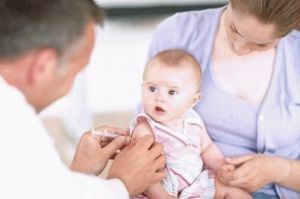
To prevent - in addition to meningococcal - vaccines are used:
- against Haemophilus influenzae type B;
- triple( against measles, measles rubella and mumps).
Meningococcal vaccine protects the vaccine from meningococci, the most common pathogens. It is introduced to children of 11-12 years old, recommended for vaccination of first-year students of educational institutions living in hostels, as well as recruit soldiers, people with immune system diseases and travelers to countries with periodic epidemics of meningitis.
An anti-hemophilic vaccine is used to inoculate:
- children from 2 months to 5 years;
- children suffering from certain types of diseases.
Previously, haemophilus influenzae type B was the most common pathogens, but the use of this vaccine made this type of bacterial meningitis rare.
Vaccinations used to prevent other diseases are also a prevention of meningitis. The triple vaccine administered to children protects against the possibility of developing a disease caused by measles or measles rubella, vaccination against chicken pox - from meningitis on the soil of "chicken pox".
Meningococcal vaccine is an effective remedy in about 80% of cases, its validity is 3 years;Do not prevent the disease in children under the age of 1.5 years.
Our recommendations
From imported vaccines are recommended for use:
- MENATRA - 5500 rubles, France.
- MENINGO A + C ( versus meningococcus serogroup A and C), France.
- VA-MENINGOC-BC ( against meningococcal serogroup B - Republic of Cuba).
- MENZEVAKS - from Belgium, 3700 rubles( at the prices of the medical center "Mobile Medicine", Moscow, the cost of the vaccine includes the cost of an immunologist's consultation).
- Meningo A + C vaccine ( Aventis Pasteur, France), application: children from 18 months: 50 mcg p / c;adults: 50 mcg p / c( or in / m);immunodeficiency: at least 3 years;epidefficiency: 85-95%.It is intended for mass immunization( at a morbidity rate of more than 20: 100 thousand people) and in outbreaks where the infection is caused by meningococcal serogroups A and C.
- The MENZEVAKS vaccine( Belgium) is designed to prevent meningococcal meningitis( meningococcal serogroups A, C,W135 and Y) in children older than 2 years and in adults. Applicable at high risk of infection( living in endemic areas or visiting them);postvaccinal immunity: from 3 to 5 years. The cost of vaccination in Voronezh is 1,700 rubles.


